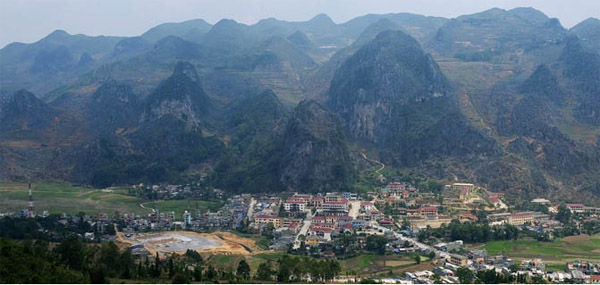You will find the answer when finding by clicking “Google” or browser through fan pages, Fan page for travel-lovers. This is the “West North yellow season” with hundreds of invitations o visit paddy fields in Yen Bai, Lao Cai, Son la…There has been so many waves of yellow rice overlaying together up to the mountain summits, which vibrates the deep souls of travelers.
Now ther have been so may vehicles to travel to the West north like going backpacking by motorbikes or register tours of travel agencies so that you can easily give the best choice for your many pockets. In comparison with so many other destinations, the time for travel is very important because it decide whether your travel is successful or not. The West North only grows one season of rice for a year at different times so that rice is yellow as its period. Rice in Spa, Quan Ba ripens earliest, the next ones are Mu Cang Chai, Hoang Su Phi…According to local people, the wonderful period is from the middle of September to the end of October when localities are in the rice summers. In this occasion, the weather is so dry that it is comfortable and easy for travel, especially when you want to go backpacking for travel.
Terraced fields in Sapa
There are so many routes that how much time you pass through, you are always surprised at the breathtakingly wonderful landscape. Mu Cang Chai (Yen Bai) is such a wonderful destination. Terraced fields in la Pan Tan, Che Cu Nha and De Xu Phinh-the national-standard beauty spot where you can travel as much as you can. Some one compares Mu Cang Chai in rice harvesting season like as a yellow terrace to the heaven, some other praises it as a splendid musical instrument

Never-ending yellow fields
Each layer of yellow waves is stretched out from valleys to hillsides and extends for foggy and high summits. Bands of colors change from strong green, light yellow, shining yellow to brown yellow, which as a brand of shining silk in the autumn. When viewing the Tu Le valley and breath full of the perfume of ripe rice to conquer the hill top Khau Pha in the foggy, you will feel the fresh vitality spreading in our hearts.
Formed hundreds years ago by La Chi, Dao, Nun communities, Hoang Su Phi terraced paddy field ( Ha Giang) was recognized as national vestige. In the harvesting season, hundreds of great engraved tracks on mountains shine a never-lasting yellow. Rice stretches on terraces and wrings on yellow mountains which is as picture-like green.
Elected as one of the seven gigantic terraced fields in Asia and in the world, Spa is in the dreamlike yellow mature over mountain villages like Trung Chai, Sa pa, Ta Phin, Lao Cai, Ta Van..Nothing romantic like in an autumn morning when travelling on zigzagging ways which are full of countryside perfumes and we suddenly catch an immense yellow paddy field in the winds. After a four-day trip to the West North with my friends, simple ways and gaze with waves of fogs in early mornings. With unchanged ways, roofs, pictures but the feelings of being taken breath away are still like those when I first came to the West North of Vietnam, said Mr. Hoang, an experienced backpacker.
Not only the green brand of silk or light yellow or shining yellow ones, there is also colorful reflections of our life. It is that the smiles of children, gentle and up bright looking of elderly people and happiness shining on young women’s faces in highlands are unforgettable memories in our life. You will feel nowhere is as beautiful as our country so that whenever we’re tired because of life in the city, we craze for a pack of sticky rice Tu Le or a crispy beef castle hang on the kitchen…The yellow autumn always wait for you!



























